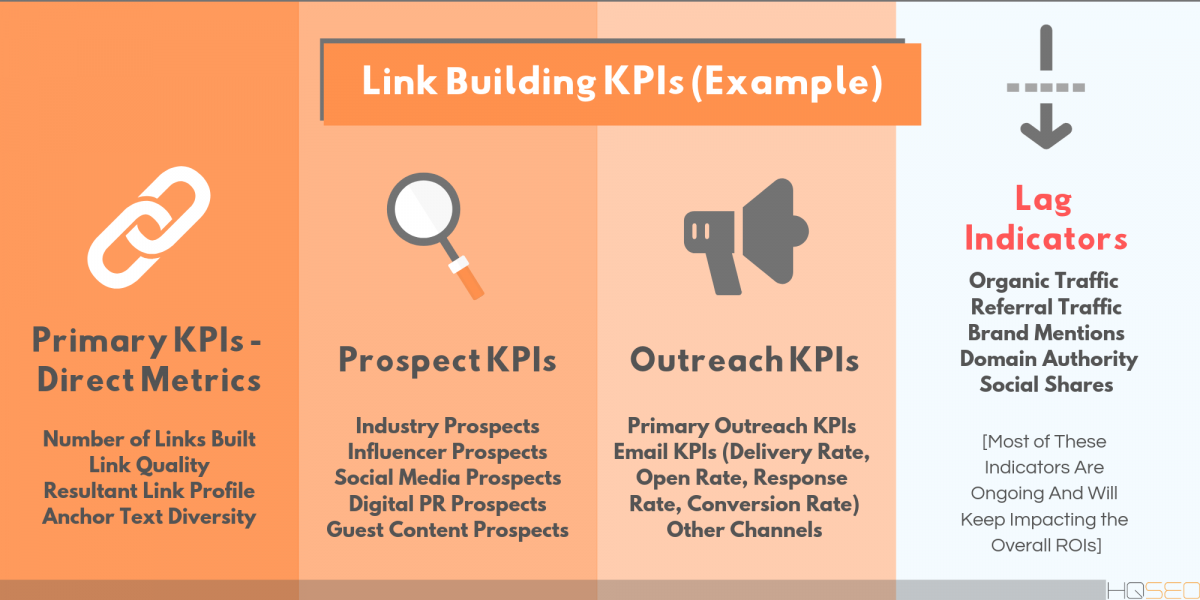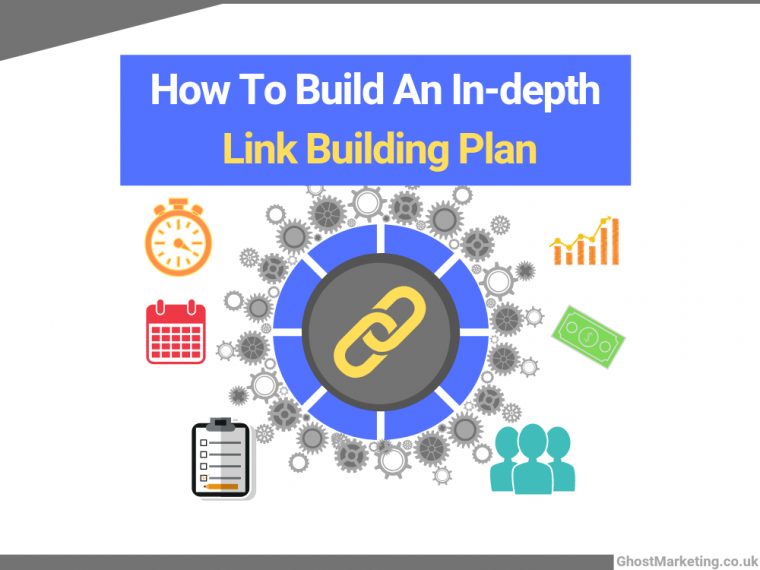Building a link generation plan or strategy can be a tough undertaking, even if you’ve done it successfully in the past.
The Reason?
Link building is becoming more and more difficult.
Webmasters are seeing dozens of requests every week and it’s only increasing. They’re also starting to realise that they can earn a lot of money for a “sponsored” post or link insertions.
As a result, building out an in-depth, potentially profitable link building plan is pretty tough. In this post, we’re going to outline how we go about constructing a link building strategy and a 10,000-foot view of a successful campaign.
Contents
What Are You Trying To Achieve?
In the words of Simon Sinek, it all starts with why.
What are you looking to achieve from a link building or digital PR campaign?
Most of the time the goal is going to be to increase organic search rankings for profitable keywords associated with your brand. This is the number 1 voted reason why businesses conduct link building campaigns .
Other reasons also included brand exposure, social exposure(?), referral traffic and using the “featured in” marketing message in other advertising materials, similar to the below screenshot:

Setting up definite goals (and objectives within those goals) lets you have a clear, uncomplicated vision for your link building strategy.
Your Goals May Look Something Like These:
- 15% Increase in organic traffic.
- 3 Links from editorial sources for utilisation in the “featured in” segment.
Once your goals are defined, it’s time to move onto analysing what resources you have.
100+ Clients. Thousands of Links. Millions in Revenue Added to the Top Line In Extremely Competitive Industries & Niches. Check Out Our End-to-end Link Building Process to See How.
Resources (Both Time & Capital)
Link building is a very resource intensive marketing method. There are multiple teams (or individuals) involved in a successful link building campaign. These obviously result in time or capital consumption. Whether you have freelancers, employees or agencies you work with, link building is always going to take a major resource investment on your part.
Potential Team:
- Content writer.
- Designer/developer to create a linkable asset (Link bait creation)
- Outreach manager.
- Prospector.
- Project Manager (potentially, for larger campaigns).
- Finance / Marketing head (potentially, for larger campaigns).
There are multiple team members involved even in smaller campaigns. Each element that makes up the circle – signing development content assets off, inserting links and paying the content creators, just to name a few – is capable to throwing the entire campaign off the track when executed poorly.
This is also one of the reasons why it’s so difficult for large corporations to build links at scale – they have to sign off on absolutely everything and each division needs to be involved. Thanks to all these inter-connected operations, scaled up link building campaigns often burn through multiple rounds of budgets and, eventually, fall apart.
Of course, this is something all link building campaigns need to stay miles away from. To do exactly that, we recommend using micro teams that are empowered to make decisions.
This is how our micro teams run:
- Project Manager/Head of Link Building for the Specific Campaign
- Outreacher
- Prospector
This structure works a lot better as it allows the prospector and outreach team members to work on the project full time without waiting for approval from others or getting bogged down in details such as content curation or pricing.
Within link building, there are also going to be capital investments. These usually take 3 forms:
- Content Writers
- Designers/Developers
- Link Hosts/Sponsors
In our Can You Buy High DALinks post we talked about how you can buy links in a relatively low risk way. This is usually looked upon as dangerous, but that’s only when it’s done in an amateur way. As niches & industries become more and more saturated, quotes are becoming more and more common from webmasters. Just make sure you’re smart about this and your links and content add value.
Content writers & designer costs can easily pile up, too. So assign a budget to each before starting a campaign.
Example of resource breakdown:
- Team member 1 – Prospector – Full time – 2 months. £2,000 (this role can usually be off-shored.)
- Team member 2 – Outreacher – Full time – 2 months. £4,000.
- Team member 3 – Project manager – Full time – 2 months. £5,000.
- Content writer – 10 posts @ £50 each = £500.
- Designer – 2 large graphics @ £250 each = £500.
Project Management & Timelines
Project management of a campaign is essential for obvious reasons. Deciding who will complete what task and when ensures a campaign runs smoothly and a team member (say, an outreacher) doesn’t have a task they cannot do because a prospector has not completed their tasks (which are required to be done first.)
We use Google Sheets for all internal and external project management in-house. There are hundreds of other project management software on the market if anyone needs additional features.
The entire campaign should be built out before the campaign even begins, ensuring small issues that slow the progress will not arise. This is essential and something that a lot of companies running internal link building campaigns do not realise before their campaigns have crashed and burnt.
Softwares Used
Another potential cost can be the softwares needed on a campaign. There are a few softwares that a lot of companies integrating link building campaigns cannot live without. In house we use few but have large subscriptions to these. The most commonly used is Ahrefs site explorer.
As well as Ahrefs, you’ll likely need an outreach tracking software, something like Buzzstream. Of course, you can work Google Sheets around to achieve all the basic functionality of such tools for free.
If these are additional costs, they should be added to your resource investment plan mentioned above.
KPIs, Goal Analysis & Pulling The Trigger

The KPIs for a campaign are going to be the number of live links built, the location of those links (quality of the site) and any additional benefits you were looking for, such as; referral traffic, editorial links, connections and influencer marketing style KPIs.
The major organic traffic increase KPI is a lag indicator. This means essentially that you’ll be seeing the results of this AFTER the links have been live, indexed and the new rankings are “calculated”. This usually takes at least a couple of weeks within Google’s algorithm and hence should not be reported on directly after a campaign finishes, instead this should be left a few weeks before reporting to either a client or exec.
Before starting one of the key parts to ensure is that you’ll generate a positive ROI. If this isn’t possible then performing an in-house link building campaign is probably not for you. Always be sure to calculate your SEO ROI before starting to ensure that if the campaign runs successfully, the end result is a large positive ROI.
100+ Clients. Thousands of Links. Millions in Revenue Added to the Top Line In Extremely Competitive Industries & Niches. Check Out Our End-to-end Link Building Process to See How.
